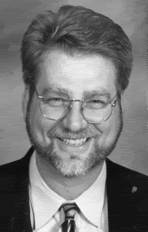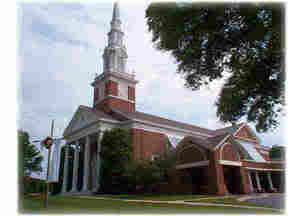a connection of missional parishes: part one
I recently completed a review or Richard Florida's The Great Reset, which will be published in a journal later this year. Florida works at the intersection of urban planning, geography and economic development. The Great Reset refers to the economic collapse of the fall of 2008, and our attempts since to find some kind of equilibrium (note this week's protests in Wisconsin). In my own thinking (and not in the review itself) I have been connecting his work with the United Methodist system, as it now exists. Gil Rendle notes in the most recent issue of the Circuit Rider that almost one in three United Methodist congregations has fewer than 35 people (10,000 of 35,000 churches). These congregations are vulnerable, their clergy leaders are often dispirited, and the economic models that undergird all of this are neither sustainable nor durable.
We find ourselves in the midst of a great reset.
A part of the reset is the struggle with the provision of a guaranteed or continued appointment for elders (I serve on the Study of Ministry Commission, and this is one of subjects of our research and conversation); another element of the reset, now less defined, is the role of the deacon in connecting the church and the world. And an additional facet of all of this is the ministry of the local pastor, which has becoming increasingly important and almost normative in the missional strategy of most annual conferences.
Our challenge lies in the great number of parishes that simply do not have enough constituents to comprise a sole unit of ministry. The reset in which we find ourselves may end up, with some intentional planning, looking like groups of parishes connected organically to each other. When I entered the ordained ministry our annual conference did include cooperative parishes, particularly in the mountain regions of our state. The introduction of the connectional mission parish model elicits a first response: "oh yes, we did that once". But, actually, I am thinking of a distinct model.
I am beginning to wonder about the possibility of connectional mission parishes that include 8-12 local churches, none less than 25 persons in worship and none more than 100 persons in worship. These connectional parishes would be led by teams of elders, deacons and local pastors. The elder or elders would celebrate communion, preach, teach the clergy team and order the life of the 8-12 churches. The deacon would develop ministries in the community---perhaps related to the needs of hunger, housing, education, immigration, and health. The deacon would spend most of his or her time developing community partnerships. The local pastors would preach and be engaged in ministries of evangelism. Most local pastors would be bi-vocational, and would therefore spend a great deal of their time in relation to persons outside the church as well. Theologically, this is a model that integrates personal and social holiness in its staffing strategy.
Connectional mission parishes might give 10% of their offerings to the denominational structures beyond the local church. The accumulation of these offerings would fund the core components of the denomination, particularly the episcopal fund, global ministries and administrative resourcing of large scale priorities. Stronger connectional parishes might have more than one elder, with one also serving as a presiding elder, or superintendent, an extension of the bishop. But in this model all superintendents or presiding elders would serve congregations.
I am describing a model that will not work, or be needed everywhere. But for much of our denomination it is a way beyond the solo pastor who serves a small and conflicted parish that feels isolated from its community and denomination, and the administrative leader who is not rooted in congregational life. The essential connection, or connectivity of mission parishes could move us to a new place; the identities of two of our categories of clergy leadership would be clearly embedded in the world, not the church; and the three categories of ministry would be organically related, and in fact would make no sense without each other.
Richard Florida sees in the Great Reset our opportunity to invest in infrastructure and transportation, and high speed rail in particular. The purpose of this investment is to bring us in proximity to each other. As our system continues in its slow decline, the options will be blame and competition or connection and communion. The latter may give us the energy to focus anew on the world that is our parish. And in a system that will produce fewer material rewards than in prior generations, we will need to rethink our ecclesial and clerical assumptions. I will reflect more fully on this reality in part two of this essay.
We find ourselves in the midst of a great reset.
A part of the reset is the struggle with the provision of a guaranteed or continued appointment for elders (I serve on the Study of Ministry Commission, and this is one of subjects of our research and conversation); another element of the reset, now less defined, is the role of the deacon in connecting the church and the world. And an additional facet of all of this is the ministry of the local pastor, which has becoming increasingly important and almost normative in the missional strategy of most annual conferences.
Our challenge lies in the great number of parishes that simply do not have enough constituents to comprise a sole unit of ministry. The reset in which we find ourselves may end up, with some intentional planning, looking like groups of parishes connected organically to each other. When I entered the ordained ministry our annual conference did include cooperative parishes, particularly in the mountain regions of our state. The introduction of the connectional mission parish model elicits a first response: "oh yes, we did that once". But, actually, I am thinking of a distinct model.
I am beginning to wonder about the possibility of connectional mission parishes that include 8-12 local churches, none less than 25 persons in worship and none more than 100 persons in worship. These connectional parishes would be led by teams of elders, deacons and local pastors. The elder or elders would celebrate communion, preach, teach the clergy team and order the life of the 8-12 churches. The deacon would develop ministries in the community---perhaps related to the needs of hunger, housing, education, immigration, and health. The deacon would spend most of his or her time developing community partnerships. The local pastors would preach and be engaged in ministries of evangelism. Most local pastors would be bi-vocational, and would therefore spend a great deal of their time in relation to persons outside the church as well. Theologically, this is a model that integrates personal and social holiness in its staffing strategy.
Connectional mission parishes might give 10% of their offerings to the denominational structures beyond the local church. The accumulation of these offerings would fund the core components of the denomination, particularly the episcopal fund, global ministries and administrative resourcing of large scale priorities. Stronger connectional parishes might have more than one elder, with one also serving as a presiding elder, or superintendent, an extension of the bishop. But in this model all superintendents or presiding elders would serve congregations.
I am describing a model that will not work, or be needed everywhere. But for much of our denomination it is a way beyond the solo pastor who serves a small and conflicted parish that feels isolated from its community and denomination, and the administrative leader who is not rooted in congregational life. The essential connection, or connectivity of mission parishes could move us to a new place; the identities of two of our categories of clergy leadership would be clearly embedded in the world, not the church; and the three categories of ministry would be organically related, and in fact would make no sense without each other.
Richard Florida sees in the Great Reset our opportunity to invest in infrastructure and transportation, and high speed rail in particular. The purpose of this investment is to bring us in proximity to each other. As our system continues in its slow decline, the options will be blame and competition or connection and communion. The latter may give us the energy to focus anew on the world that is our parish. And in a system that will produce fewer material rewards than in prior generations, we will need to rethink our ecclesial and clerical assumptions. I will reflect more fully on this reality in part two of this essay.




 Carter's Roost
Carter's Roost




0 Comments:
Post a Comment
<< Home